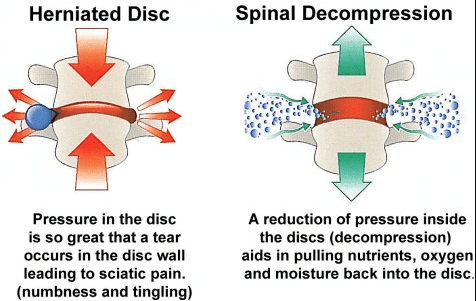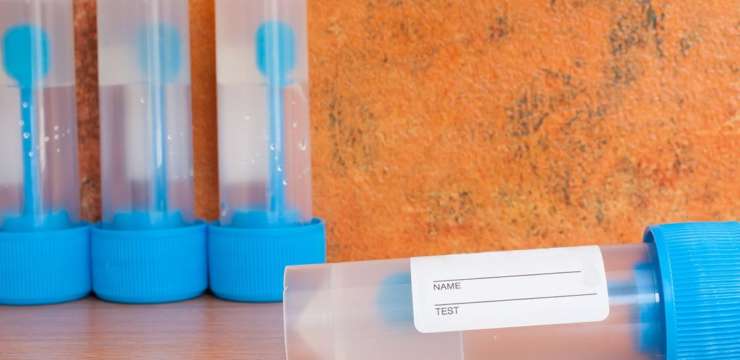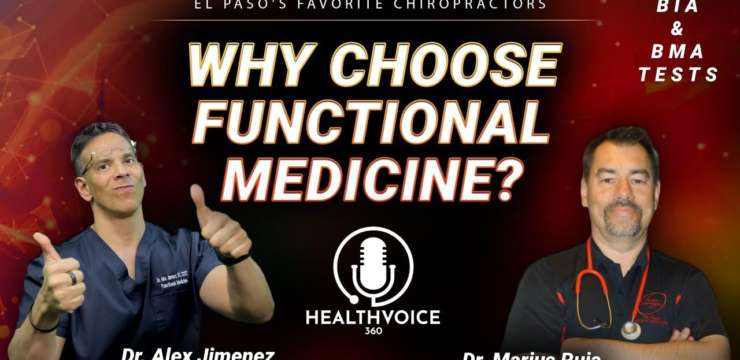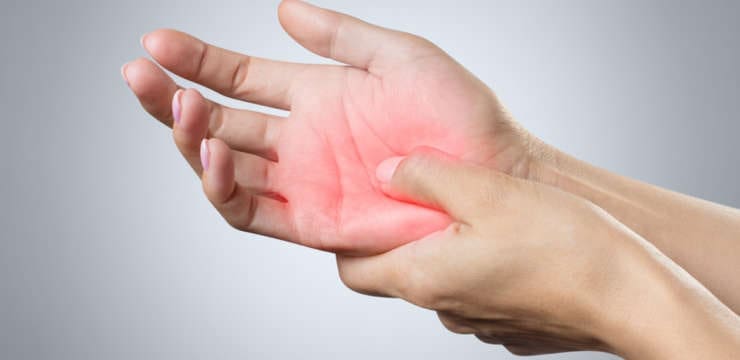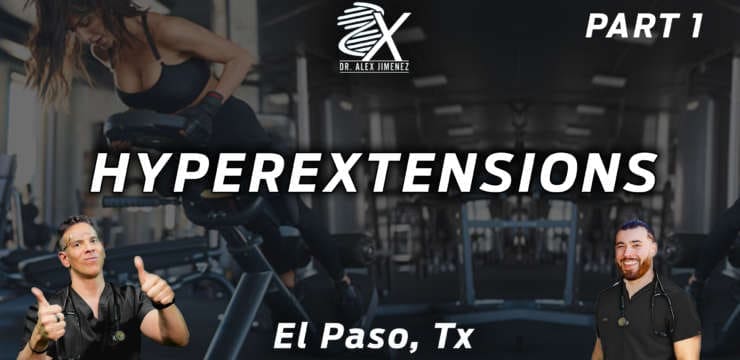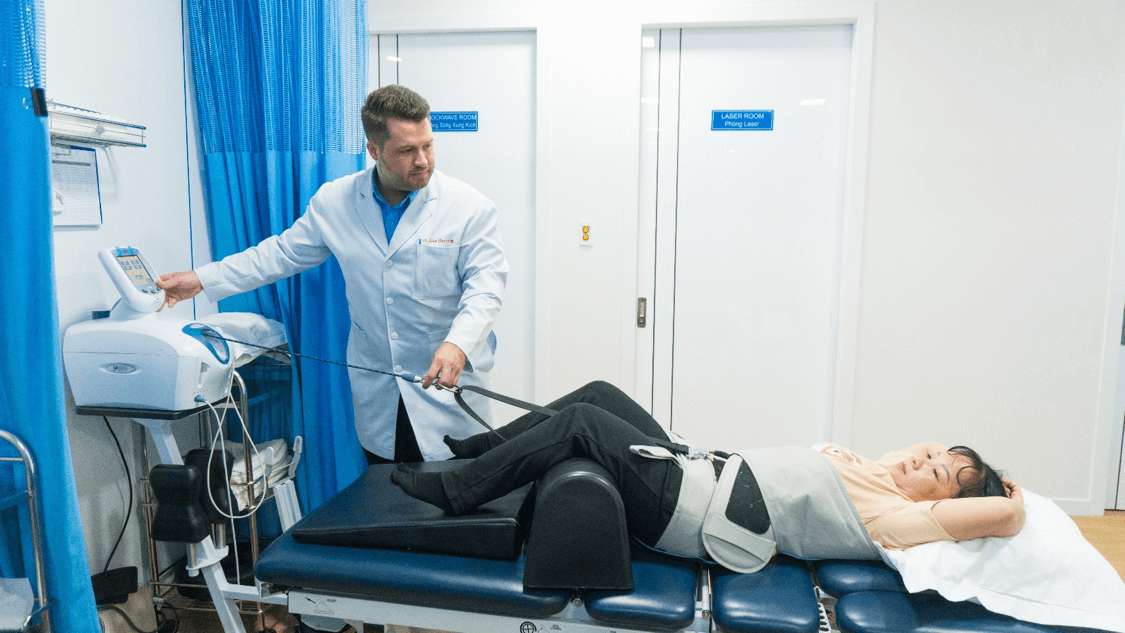
Table of Contents
Introduction
The body is a well-tuned machine that makes sure that it moves constantly and functions appropriately. The body is also home to the organ systems, muscle tissues, skeletal joints, and cellular structures, where it’s their job to make sure that the body is working and getting the nutrients that it needs to keep everything working together. When different scenarios start to affect the body, it can cause different types of issues that can not only damage the body but also cause it to be dysfunctional. These scenarios can be done internally or externally to the body and can damage the organs, joints, or even the spine. In this article, we will be looking at what the spine does and what spinal decompression therapy is. By referring patients to qualified and skilled providers specializing in spinal decompression therapy. To that end, and when appropriate, we advise our patients to refer to our associated medical providers based on their examination. We find that education is the key to asking valuable questions to our providers. Dr. Alex Jimenez DC provides this information as an educational service only. Disclaimer
Â
Can my insurance cover it? Yes, it may. If you are uncertain, here is the link to all the insurance providers we cover. If you have any questions, please call Dr. Jimenez at 915-850-0900.
What Does The Spine Do?
The spine is located in the back and makes sure that the body is not falling apart as it is the body’s central support structure. Research studies have shown that as part of the musculoskeletal system since the spine is connected to different parts of the muscle tissues that make sure that the body is moving. The spine’s primary function is to help the body sit, stand, walk, twist, and bend as it is in motion. A healthy spine will have these natural curves that will absorb shocks that the body encounters and protect the spine itself from injury in an S-shaped curve. Other research studies have shown that the spine comprises bone, cartilage, ligaments, nerves, and muscles that play an integral role in how the spine is formed and how it functions. The many different parts that make up the spine include:
- Vertebrae
- Facet joints
- Intervertebral disks
- Spinal cord & nerves
- Soft tissues
When back pain or spinal injury starts to affect the back and the spine, many back issues will begin to affect the spinal health over time. This is due to the spine’s vertebrae and disks wearing down due to age, and that can cause the individual pain. There are ways to lessen the pain from the spine, and that is through spinal decompression therapy.
Walking With Spinal Cord Injury-Video
The spinal cord is made of soft tissues. It encompasses the spine as the spinal cord is a part of the central nervous system. Research studies have shown that spinal cord injury is when there is damage to any part of the spinal cord or damaged nerves that can often cause permanent changes in a person. Some of the symptoms caused by spinal cord injury can be complete, where all the sensory and motor functions are lost below the neck, or incomplete, where a person will have some of the motor and sensory functions below the waist. All is not lost as there is therapy rehabilitation to strengthen the spine and spinal cord from incomplete spinal cord injury, and one of those rehabilitations is spinal decompression therapy.
What Is Spinal Decompression Therapy?
Since the spine provides support to the body, spinal injury or spinal degeneration to the spine can cause excruciating pain to anybody. Around 80% of individuals usually suffer from a back injury. Research studies have shown that when a person is feeling severe pain in the spine, it is due to the compression that puts loads of pressure on the spinal cord or the nerves themselves. The best way to relieve the spinal cord’s stress is through spinal decompression therapy.
Research studies have found that spinal decompression therapy is a non-surgical decompression therapy that involves stretching the spine by using a traction table to relieve back pain or even leg pain that a person is suffering from. Other research studies have stated that spinal decompression therapy can also reduce the pressure on the intervertebral disc by supplying nutrients and oxygen back to the disc. This will cause relief to those pressurized discs as it causes negative pressure on the spine. Once a person receives spinal decompression therapy, they will notice a significant pain reduction in their spine and a higher increase in their range of motion as they become pain-free.
Conclusion
All in all, it is essential to make sure that the spine is healthy. Since the body is a well-tuned machine, it is necessary that the spine is being taken care of. Even though there are many scenarios that the body can get into when a person gets a back injury, it is crucial to recover and go to therapy sessions to relieve the pain, or else it will get worse over time. Spinal decompression therapy is a non-surgical option that many individuals can utilize. It provides a gentle stretch on the spine, causing instant relief to the compressed spinal disc that is causing a person pain. Using spinal decompression as a therapy option can make a person pain-free and get them back on their wellness journey.
References
Choi, Jioun, et al. “Influences of Spinal Decompression Therapy and General Traction Therapy on the Pain, Disability, and Straight Leg Raising of Patients with Intervertebral Disc Herniation.†Journal of Physical Therapy Science, The Society of Physical Therapy Science, Feb. 2015, www.ncbi.nlm.nih.gov/pmc/articles/PMC4339166/.
Gay, Ralph. “All about Spinal Decompression Therapy.†Spine, Spine-Health, 24 Sept. 2013, www.spine-health.com/treatment/chiropractic/all-about-spinal-decompression-therapy.
Medical Professionals, Cleveland Clinic. “Spinal Decompression Therapy: Lower Back Pain & Back Pain Relief.†Cleveland Clinic, 18 Jan. 2022, my.clevelandclinic.org/health/articles/10874-spinal-decompression-therapy.
Medical Professionals, Cleveland Clinic. “Spine Structure & Function: Parts & Segments, Spine Problems, Spine Health.†Cleveland Clinic, 7 Dec. 2020, my.clevelandclinic.org/health/articles/10040-spine-structure-and-function.
Sassack, Brett, and Jonathan D Carrier. “Anatomy, Back, Lumbar Spine – StatPearls – NCBI Bookshelf.†In: StatPearls [Internet]. Treasure Island (FL), StatPearls Publishing, 8 Aug. 2021, www.ncbi.nlm.nih.gov/books/NBK557616/.
Staff, Mayo Clinic. “Spinal Cord Injury.†Mayo Clinic, Mayo Foundation for Medical Education and Research, 2 Oct. 2021, www.mayoclinic.org/diseases-conditions/spinal-cord-injury/symptoms-causes/syc-20377890.
Disclaimer
Disclaimers
Professional Scope of Practice *
The information herein on "An Overview of Spinal Decompression Therapy" is not intended to replace a one-on-one relationship with a qualified health care professional or licensed physician and is not medical advice. We encourage you to make healthcare decisions based on your research and partnership with a qualified healthcare professional.
Blog Information & Scope Discussions
Welcome to El Paso's wellness blog, where Dr. Alex Jimenez, DC, FNP-C, a board-certified Family Practice Nurse Practitioner (FNP-C) and Chiropractor (DC), presents insights on how our team is dedicated to holistic healing and personalized care. Our practice aligns with evidence-based treatment protocols inspired by integrative medicine principles, similar to those found on dralexjimenez.com, focusing on restoring health naturally for patients of all ages.
Our areas of chiropractic practice include Wellness & Nutrition, Chronic Pain, Personal Injury, Auto Accident Care, Work Injuries, Back Injury, Low Back Pain, Neck Pain, Migraine Headaches, Sports Injuries, Severe Sciatica, Scoliosis, Complex Herniated Discs, Fibromyalgia, Chronic Pain, Complex Injuries, Stress Management, Functional Medicine Treatments, and in-scope care protocols.
Our information scope is limited to chiropractic, musculoskeletal, physical medicine, wellness, contributing etiological viscerosomatic disturbances within clinical presentations, associated somato-visceral reflex clinical dynamics, subluxation complexes, sensitive health issues, and functional medicine articles, topics, and discussions.
We provide and present clinical collaboration with specialists from various disciplines. Each specialist is governed by their professional scope of practice and their jurisdiction of licensure. We use functional health & wellness protocols to treat and support care for the injuries or disorders of the musculoskeletal system.
Our videos, posts, topics, subjects, and insights cover clinical matters, issues, and topics that relate to and directly or indirectly support our clinical scope of practice.*
Our office has reasonably attempted to provide supportive citations and has identified the relevant research studies or studies supporting our posts. We provide copies of supporting research studies available to regulatory boards and the public upon request.
We understand that we cover matters that require an additional explanation of how they may assist in a particular care plan or treatment protocol; therefore, to discuss the subject matter above further, please feel free to ask Dr. Alex Jimenez, DC, APRN, FNP-BC, or contact us at 915-850-0900.
We are here to help you and your family.
Blessings
Dr. Alex Jimenez DC, MSACP, APRN, FNP-BC*, CCST, IFMCP, CFMP, ATN
email: coach@elpasofunctionalmedicine.com
Licensed as a Doctor of Chiropractic (DC) in Texas & New Mexico*
Texas DC License # TX5807
New Mexico DC License # NM-DC2182
Licensed as a Registered Nurse (RN*) in Texas & Multistate
Texas RN License # 1191402
ANCC FNP-BC: Board Certified Nurse Practitioner*
Compact Status: Multi-State License: Authorized to Practice in 40 States*
Graduate with Honors: ICHS: MSN-FNP (Family Nurse Practitioner Program)
Degree Granted. Master's in Family Practice MSN Diploma (Cum Laude)
Dr. Alex Jimenez, DC, APRN, FNP-BC*, CFMP, IFMCP, ATN, CCST
My Digital Business Card


